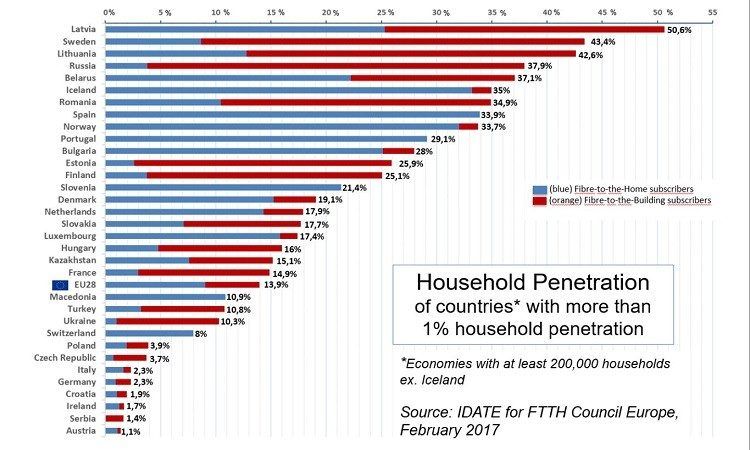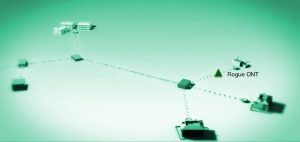
Ireland appears on the FTTH Council Europe’s FTTH/B leaders list for the first time. The UK remains conspicuous by its absence.
IDATE, working with the FTTH Council Europe at the latter’s FTTH Conference 2018 in Valencia, Spain, last week, reported that the number of subscribers in Europe served via fiber to the home/fiber to the building (FTTH/FTTB) networks increased 20.4% between September 2016 and September 2017. The increase in subscribers came as take rates on the continent among EU39 countries grew from 29.2% to 34.8% over the same time period.
The number of homes passed among the EU39 countries also expanded, to more than 148 million. The figure represents a 16% climb over the study period.
Russia led the way to FTTH/FTTB subscriber growth; the country added 1,826,000 FTTH/FTTB subscribers in the 12 months ending September 2017. Spain (1,612,371 new subscribers) and France (an additional 1,067,780 subscribers) also enjoyed significant upswings.
Private network operators are jumping into FTTx deployments in a big way; 56% of FTTx network operators in Europe fall into this category, according to IDATE.
Meanwhile, the Fiber to the Home Council Europe updated its list of FTTH/FTTB deployment leaders among European countries. Latvia remained in the top spot, with a 50.6% penetration rate (see figure above). Ireland joined the list for the first time with a penetration rate of 1.7%. Countries must have a penetration rate of at least 1% to be included in the tally.
The figures in Europe track with those recently released for North America, where FTTH new builds reached record levels during the same 12-month timeframe (see “U.S. FTTH deployments set record: Fiber Broadband Association”).
February 20, 2018
Lightwave Staff



